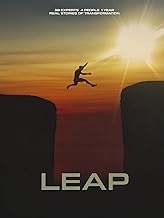Unlike the realm of virtual reality, augmented reality is less about losing yourself in some fantasy environment, and more about getting things done in the real world. So while we've seen some great games that capture the imagination on devices like the Magic Leap One and the HoloLens, when it comes to real-world usage, the biggest developments coming for AR apps that are the more practical ones.
Fittingly, we now have two apps available on the devices mentioned above that cater directly to the notion of using AR to work rather than play. In this case, that work involves communication.
Magic Leap's Avatar Chat, teased during the L.E.A.P. convention, and released a couple of weeks ago in partnership with Twilio, allows any two Magic Leap One users to communicate in real time from remote locations using simplified avatars. On the other hand, New York-based startup Spatial just launched its remote communication solution for Microsoft's HoloLens that is "a lot" different, but serves the same general purpose.
Since so many of the non-gaming AR apps out there are so enterprise-centric, the release of these two AR communication apps offers a unique opportunity compare the effectiveness of the two competing, high-end AR devices when faced with a similar task.
What follows is by no means an exhaustive review of these apps, but after testing both apps and putting them through their paces, I can offer some insight into which one might be for you if you're considering delving into the world of AR-powered remote meetings. This article is Part One, focused on Magic Leap, with Part Two, focused on the HoloLens.
Avatar Chatting
Avatar Chat is the app you've probably heard about the most. The free app downloads quickly to your Magic Leap One and is fairly simple to set up. Like many traditional social media accounts, you get to pick a username (if it's still available), and write a description that can include your email address and website name.
Of course, the best part is that you get to pick an avatar (just head, shoulders, and hands) that moves in concert with your real head movements. This aspect includes the ability to be tracked as you spin around in a circle, or cock your head to the quizzically during a conversation. There was no visible lag to this feature, so the prospect of using the app as a real tool for remote conversation in which reactions and real-time conversational body language are vital is fairly viable.
Likewise, when you speak, the audio triggers your avatar's mouth movement to simulate speaking, and the eye tracking component on the Magic Leap One delivers avatar eye blinks in (mostly accurate) concert with your real eye movements.
Troll Control
Another important component of Avatar Chat are the privacy controls. Just like two-dimensional social media, you can set your avatar account to be public or private, list yourself as busy, offline, or online, and you can control the personal information (phone number, location, real name or pseudonym, etc.) other Avatar Chat users can see.
But since I've had a good deal of experience dealing with VR social avatars, I know that some users can sometimes bring the trolling and harassment of the traditional web into immersive computing. (An area that will likely receive more attention as discussions around Section 230 of the Communications Decency Act move into the virtual worlds of VR and AR.) So I asked Savannah Niles, a product designer and project leader on the Avatar Chat team, about this area. She confirmed that the app team spent a good deal of time thinking about this issue in particular, which is why the privacy and blocking controls are so robust.

Adario Strange/Next Reality
This approach even bleeds into the usage of the avatars themselves. During a long Avatar Chat session with Niles, she showed me the app's set boundaries for how close another avatar can get to another, thus avoiding anyone potentially violating someone's personal space in AR. It might sound silly if you've never engaged in an avatar social session in VR or AR, but I can confirm from direct experience that some people will violate your avatar's personal space.
And while it's not real, and there's no physical harm, once you're accustomed to the virtual environment, there is a sense inappropriateness when even a virtual avatar starts getting a little too close for comfort while yelling at you through their virtual face. This attention to the social media aspect of Avatar Chat is something Magic Leap deserves kudos for.
Virtual Touch
On the positive side of virtual contact, Niles also helped me try out the high five and fist bump functions that allow you to virtually touch a fellow user (each action results in virtual fireworks or flamingos). We also tried the emoji sharing, which was cute, but not something I think I'd use much (and I'm a bit of an emoji fanatic, but I just wasn't excited by that feature).
During the session we did everything from watching a YouTube video together via the Helio app, to share photos using the Gallery app. (To share content with another user, you have to accept a "cast" from the other user first, or initiate it yourself and wait for acceptance of the cast.)

Adario Strange/Next Reality
I also put the system's hand tracking abilities to the test, using my real hands to make certain gestures and then having my chat partner mirror those gestures in her avatar form to confirm that my gestures were being interpreted correctly via my avatar form on her side. It's a powerful demonstration of what's possible via this kind of system.
Overall, for one-to-one communication, the app is impressive. But here's where some of the app's shortcomings arise.
The fact that the app is currently only able to facilitate a conversation between two people limits its effectiveness as a true collaboration tool if you want to meet with more than two people (the initial demo video showed us three people chatting).
Magic Leap assured me that a three-person feature would be coming to the app in the next update, and a four-person update arriving soon after that. Near future updates will also allow users to customize their avatars to look more like their real selves.
Update: The latest software update adds three-person chats to Avatar Chat.
Aside from visual interactions, what surprised me about the app was how crystal clear the audio was. Niles' voice (coming from Florida to my location in New York City) sounded much better than any cell phone call I've made in recent years, and even a little better than most Skype calls.
One quirk with the app was the avatar tracking. Although my avatar seemed as though it generally stayed in place, I found that I frequently had to ask my chat partner to position herself in a specific way to get a truly "face to virtual face" experience. Otherwise, she'd occasionally disappear into my walls. These disappearances could be due in part to the fact that I used a very small space to initiate the AR chat. Nevertheless, I haven't had this issue with most other Magic Leap apps (except, of course, space-needy apps like Dr. Grordbort's Invaders).
Conclusion
Finally, one of the best features of the Magic Leap One, which is the ability to record video of what you've done and then instantly share it on YouTube or Twitter, was met with a problem in this instance.
Previously, all my video captures were recorded and sent to YouTube with no problem, but because this video capture was about 30 minutes long, when I tried to share it, the system said that the file was too big. Most meetings last "at least" 30 minutes, so this current limit could be a problem for those looking to save and review an important meeting.
Luckily, I have the Magic Leap One Hub attachment (not included in the default Magic Leap One package, but available to all and priced at $60), which allows me to connect the headset to my computer, open the Lumin SDK and then use a set of Terminal commands to download the video. But I'm guessing that this isn't a process most non-developer users will want to go through, so it's something that Magic Leap should be addressing in future updates to Avatar Chat.
To sum it all up, if you're looking for a way to start having remote, AR-powered meetings with one another person "today," Avatar Chat, which is a free app, is an easy choice. But there are limitations to what Avatar Chat offers, most of which are apparent in the second part of this feature, which tackles the Spatial app on Microsoft's HoloLens.
- Follow Next Reality on Facebook, Twitter, Instagram, YouTube, and Flipboard
- Sign up for Next Reality's daily, weekly, or monthly newsletters
- Follow WonderHowTo on Facebook, Twitter, Pinterest, and Flipboard
Cover image via Adario Strange/Next Reality



























Comments
Be the first, drop a comment!